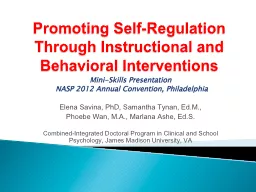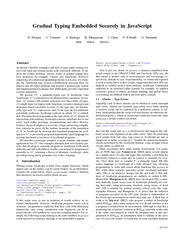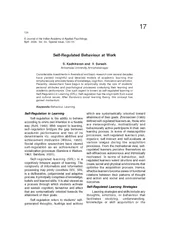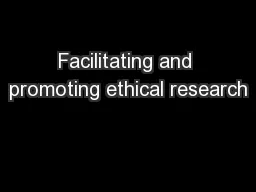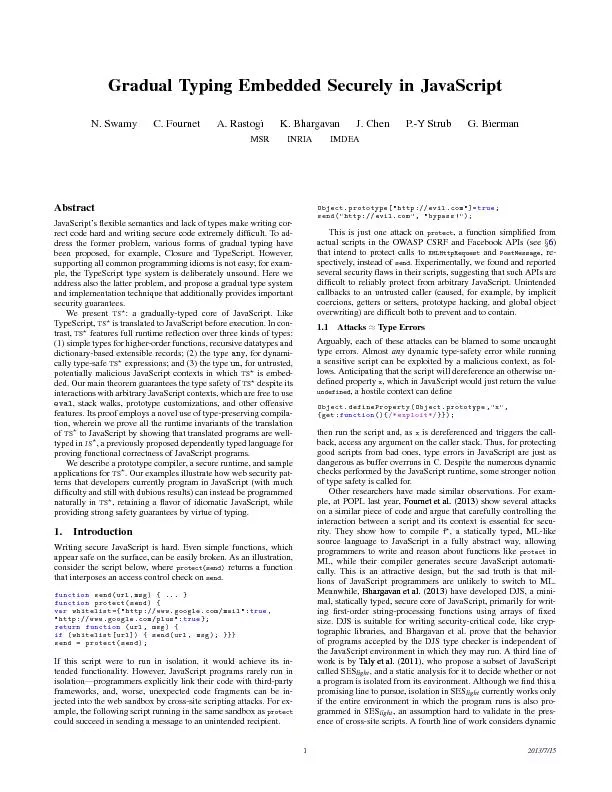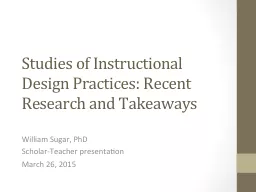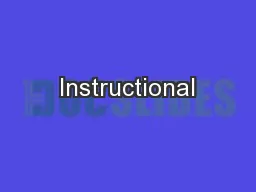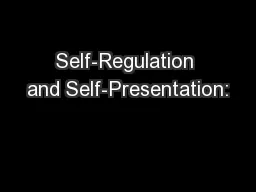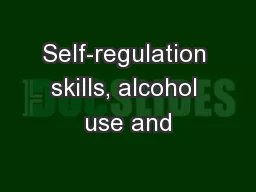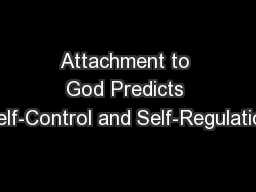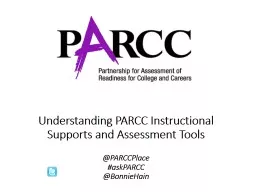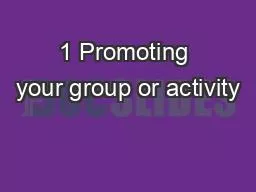PPT-Promoting Self-Regulation Through Instructional and Behavio
Author : karlyn-bohler | Published Date : 2017-07-01
MiniSkills Presentation NASP 2012 Annual Convention Philadelphia Elena Savina PhD Samantha Tynan EdM Phoebe Wan MA Marlana Ashe EdS CombinedIntegrated Doctoral
Presentation Embed Code
Download Presentation
Download Presentation The PPT/PDF document "Promoting Self-Regulation Through Instru..." is the property of its rightful owner. Permission is granted to download and print the materials on this website for personal, non-commercial use only, and to display it on your personal computer provided you do not modify the materials and that you retain all copyright notices contained in the materials. By downloading content from our website, you accept the terms of this agreement.
Promoting Self-Regulation Through Instructional and Behavio: Transcript
Download Rules Of Document
"Promoting Self-Regulation Through Instructional and Behavio"The content belongs to its owner. You may download and print it for personal use, without modification, and keep all copyright notices. By downloading, you agree to these terms.
Related Documents

